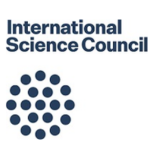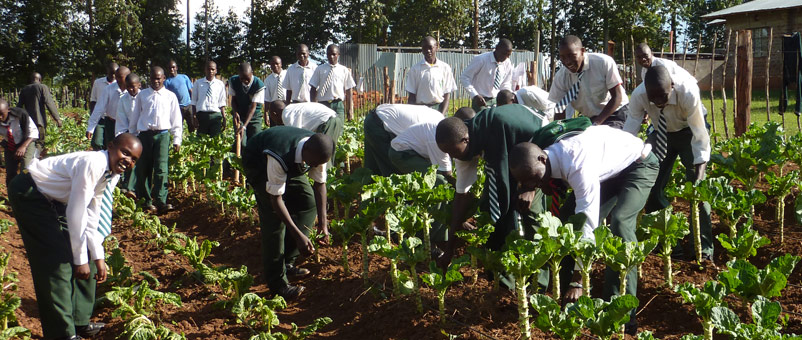From the climate emergency and global health to the energy transition and water security, the new ISC report argues that global science and science funding efforts must be fundamentally redesigned and scaled up to achieve the Sustainable Development Goals and meet the complex needs of humanity and the planet.
The United Nations has warned that at the current rate of global progress, 575 million people will still be living in extreme poverty by 2030, with almost half the Sustainable Development Goal targets moderately or severely off track.
By 2050, up to 70 per cent more food production will be required globally. Meeting this growing demand for food, energy and water will amplify existing global challenges, especially in the Global South. On top of this, many communities around the world are facing the dual burden of malnutrition, with evidence of both undernutrition and malnutrition threatening long-term human well-being.
The current sustainability science model requires a fundamental redesign to keep up with the pace and complexity of the challenges facing the planet, argues the high-level Global Commission on Science Missions for Sustainability.
In a new report launched at the UN’s High-Level Political Forum, the Commission warns that prevailing science design, funding and practice fail to address complex global issues at the speed and scale required.
Solutions to achieve sustainable development
To rectify the issue, the Commission recommends setting up an ambitious $1 billion per year ‘mission science’ network of Regional Sustainability Hubs around the world. These Hubs would tackle context-specific and complex issues – from climate change and malnutrition to water security and clean energy – through a systematic engagement process, from problem definition to implementation, with key stakeholders in regions wherever they are needed, particularly in the Global South.
A collective investment of this size is not even one percent of the global annual R&D budget, yet it would significantly accelerate the progress towards the implementation of the 2030 Agenda.
“Sustainability is no longer an aspiration; it has become an imperative,” said Ambassador Csaba Kőrösi, President of the UN General Assembly. “To seek integrated and sustainable solutions, policy and political decisions at the United Nations must be supported by science-based evidence.”
As described in the report Flipping the Science Model: A Roadmap to Science Missions for Sustainability, the Commission calls for a ‘mission science’ approach, meant to overcome the fragmented, compartmentalized scientific knowledge that often fails to connect with and to address society’s most immediate needs. It seeks to work in a transdisciplinary, collaborative way that is demand-driven and outcome-oriented.
Experts weigh in
Convened by the International Science Council (ISC), the Commission includes the former heads of UN agencies and government ministries as well as heads of national science academies and foundations.
“Just as the global community has used big science approaches to build infrastructure like CERN and the Square Kilometer Array, a similar mindset should be applied, particularly in the Global South, to address sustainable development challenges,” said Commission co-Chair Irina Bokova, former Director-General of UNESCO. “Unless funders accept the need to transform their funding instruments to promote transdisciplinary stakeholder-engaged research, science will continue to be under-exploited in addressing the challenges of the 2030 Agenda.”
“Actionable scientific knowledge can be generated only through frank dialogues between scientists and funders based on trust,” said Peter Gluckman, President, ISC and Salvatore Aricò, CEO, ISC. “The same applies to the interaction of scientists with policy-makers on the one hand and with local and indigenous communities on the other, as both sides are exposed to the need to find solutions to complex sustainability challenges at multiple scales.”
As a proof of concept, the Commission is calling for financial support for a series of pilots over an 18-month period to demonstrate the delivery of mission-led research through these Hubs and refine their approach further, with the ultimate goal of around 20 Hubs operating thereafter.
Real-life interventions
The Hubs would provide a framework to do science for the SGDs differently. They would allow to develop context-specific solutions to sustainability challenges, at the local and global scales – ensuring that science is fit-for-purpose, inclusive and results-driven to address the complex real-world situations it seeks to transform. In Nepal, for example, increased damming of rivers that drain from the Himalayas to India is intended to provide for the growing energy needs of multiple regions across national boundaries as well as a source of economic growth. Likewise, building roads and railways to connect with neighboring countries in the north and the south could provide not just economic benefits at national scales but also access to facilities for remote communities.
Similarly, the Zambezi River basin in southern Africa is a critical resource in providing the food, energy, water and ecosystems support of the surrounding population. All these developments would require a science-based understanding of trade-offs, unintended consequences and risks that may arise with such developments, with important implications for the short- and long-term wellbeing of economies, communities and ecosystems.
This article originally appeared on the International Science Council news page and has been edited to fit Farming First’s editorial guidelines.
Image: Unsplash



